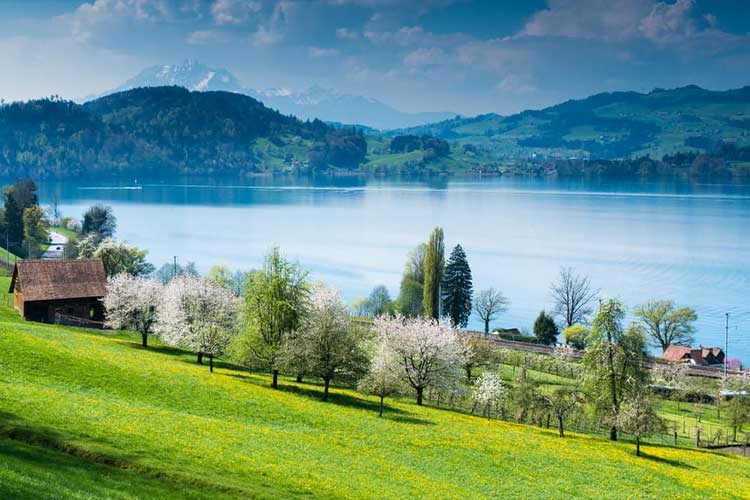

Heat pumps and water from Lake Zug are used for cooling and heating, while rooftop photovoltaic systems produce electricity at the campus
September 13, 2023 | Staff Reporter | Switzerland | Facilities Management

Siemens has inaugurated its climate-neutral research and development (R&D) facility in Zug, Switzerland, following seven years of construction. The campus combines real and digital worlds and provides a climate-neutral working environment for more than 1,700 colleagues to help advance the technological development for critical infrastructure worldwide.
As the global headquarters for smart infrastructure, Zug is a key location for the development of building technologies, filing around 80 new patents every year. The 25,000 sq m campus consists of a main building, a factory alongside the newly added R&D centre. Heat pumps and water from Lake Zug are used for cooling and heating, while rooftop photovoltaic systems produce electricity. Planted flat roofs provide an additional layer of insulation.
Siemens’ building automation system Desigo CC, part of Siemens Xcelerator, provides optimal room climate control as well as energy efficiency, and together with LED lighting, the system ensures the best possible indoor comfort. In addition, some 50 Siemens-owned charging stations support sustainable mobility. The office building has achieved platinum certification according to the LEED standard, while the production facility and R&D building both achieve gold standard.
Building information modelling (BIM) was used in the design of the campus. Using BIM, a building is constructed twice, first virtually, then in the real world. It allows electricity, heating, cooling and water consumption to be documented, measured and adjusted through various applications.
A room reservation system is connected to Siport access control and Desigo CC for demand-driven room control and digital signage. In addition, a variety of IoT functions have already been implemented to increase building efficiency, improve comfort and optimise user experience. “Technology is the key to sustainability,” said Roland Busch. “With 40 per cent of global energy demand coming from buildings, zero carbon facilities are a huge lever for businesses – and countries – to become greener. It’s complex. We use artificial intelligence to orchestrate hardware and software.”
He added, “Switzerland’s high environmental standards and world class universities make it the perfect place to advance this technology. And Siemens Xcelerator, our new digital business platform, makes it easier for customers to implement by making it modular.”
The R&D building, modernised at a cost of around 70m Swiss francs, is the latest chapter in a long tradition of Siemens investments in Switzerland. More than 70 years ago, Siemens was already working closely with the then fire alarm company Cerberus. In 1998, Siemens took over the industrial activities of Elektrowatt, which in addition to Cerberus also included the Zug-based company Landis & Gyr, and from this formed the building technologies business unit. Since then, the Siemens Building Technologies division became part of Siemens Smart Infrastructure in 2019.